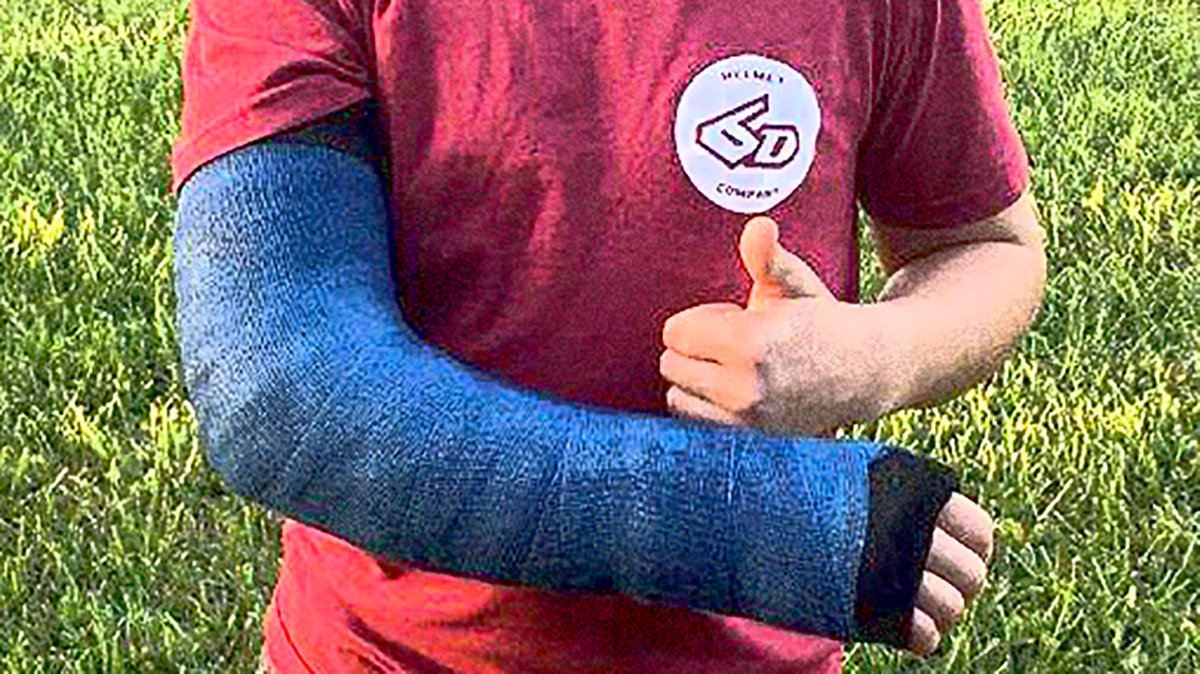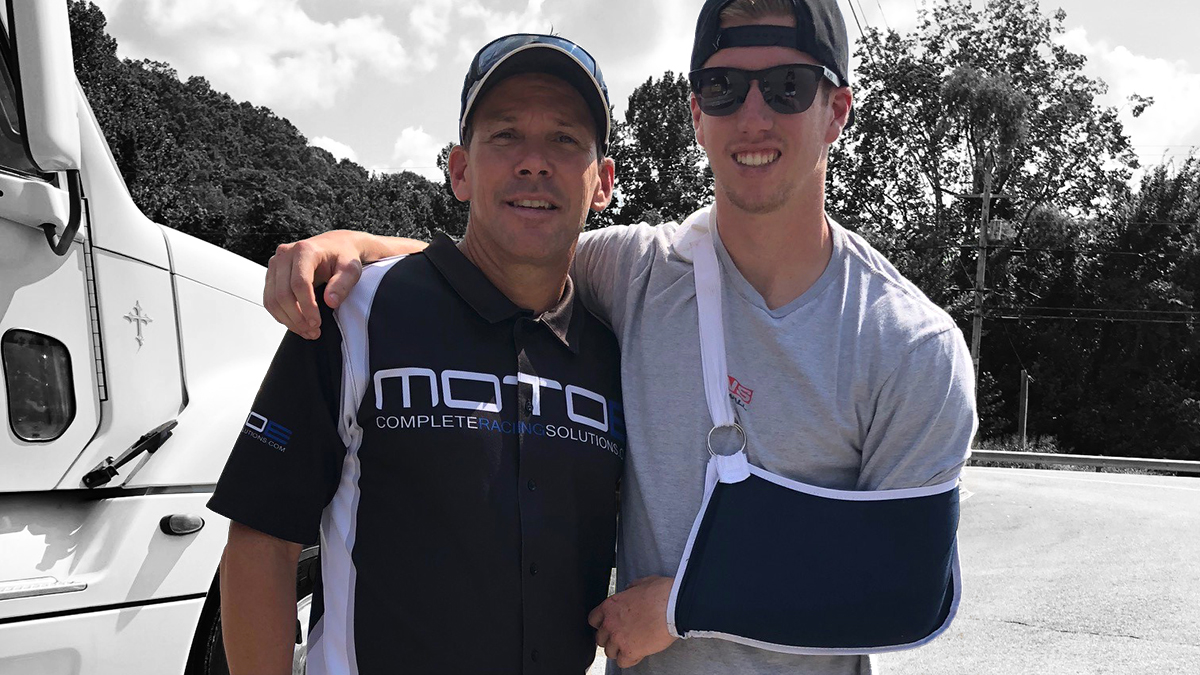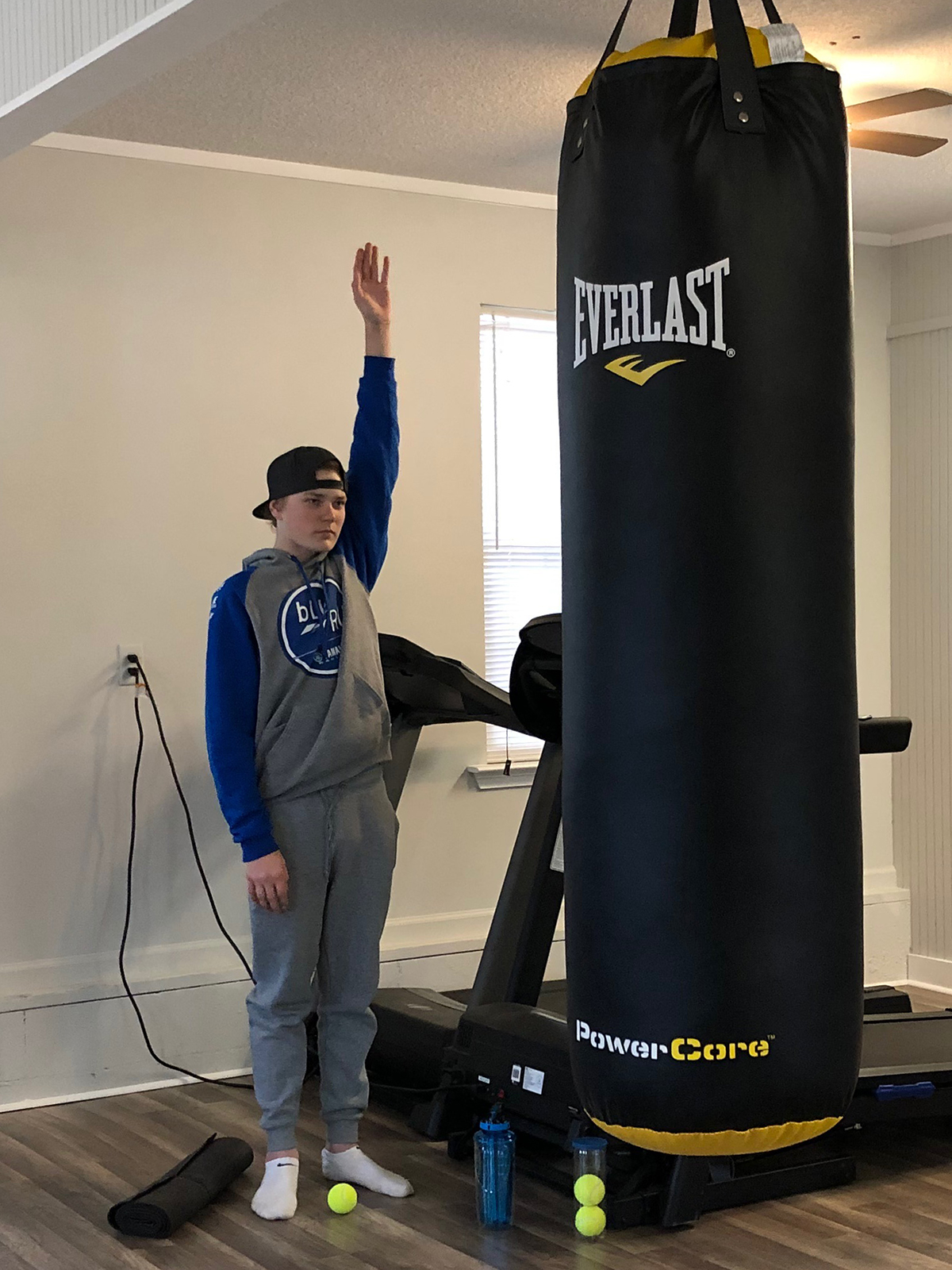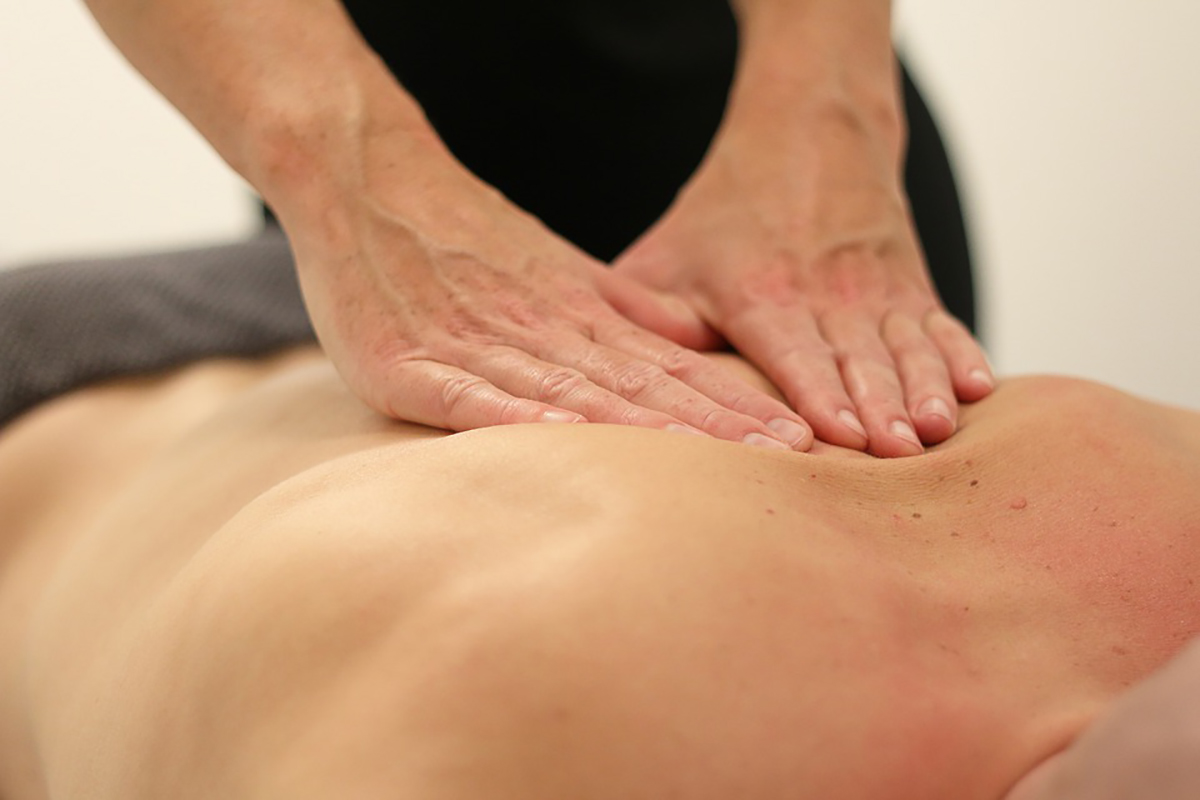In this three-part series, Coach Robb Beams discusses the top three mistakes when recovering from an injury – and how to avoid them. Here is Part 2…

When you become injured there are stages of emotion just like any major issue in life: denial, anger, bargaining, depression and acceptance.
PART 2 – EMOTIONAL
Denial
Unless the injury is obvious: broken bone, concussion, etc., our brain wants to “ignore” the fact that something is wrong and needs to be addressed. Whether this mind set is due to “we don’t want to be considered weak and injury prone” or ”if I ignore it, it will go away”, either way, we as humans fight the idea that we are injured. We have to pull back in our training and become more creative to get workouts in.
Anger
Once we acknowledge and accept the fact that we are hurt, anger inevitably sneaks in. No one clearly understands the sacrifice of time, energy and resources you have invested in your current level of speed, endurance and strength. You feel that all these performance elements will quickly slip through your fingers and your fitness levels will regress back to where you were a year ago. The anger and frustration levels escalate to completely new levels when the source of your injury isn’t truly your fault: car accident, dirty move by one of your competitors, equipment failure, etc…
Bargaining
We begin to bargain with ourselves that instead of training eight hours a week, we will pull back to six hours and this will be enough for us to heal while minimizing our fitness loses. Many times, we will continue with the same sport-specific activities, but rationalize our behavior by “going slower”.
Depression
One of the huge benefits of consistent training is the hormonal release of endorphins commonly referred to as the “athlete high”. When your body doesn’t get to experience the releasing of these feel good moments on a regular basis, the mental capacity to deal with relationships, professional obligations, financial situations, etc., becomes less resilient and even intolerant. Little issues that used to roll off your back now set you off in a verbal tantrum adding to the frustrations of not being able to exercise and sport-specific train like you used to.

Acceptance
Once you recognize that ignoring your injury won’t help heal the injury (chemically, mentally or physically) and staying angry isn’t going to solve your situation, it is time to move into a state of acceptance. Facing accountability for why the injury happened is one of the hardest things for an athlete to do. Over my last 35 years of coaching, I have found that the catalyst of injuries typically falls into three categories:
- Working in a mode of fear. Instead of working in a mode of fear, successful individuals work in a mode of pleasure. They are motivated by enjoyment of success and look at each decision as a building block to moving them closer to the desirable outcome verses looking at decision and behavior as a punishment for poor choices. Pro-active example: If I go to bed early, I will get more sleep and wake up leaner and fully recovered. Mode of fear example: If I don’t go to bed early, I will get fat. Ironically, the brain much prefers pleasure over pain. However, our society has glamorized the “no pain, no gain” mindset that has literally hurt us.
- Not listening to the body. The human body is an incredible machine and has a multitude of ways to let you know when something is not correct. It is our responsibility to look for, recognize and respect when things do feel right. This is where there is a slight overlap with number one above, working in a mode of fear.In the exercise realm, I refer to using exercise for punishment because of the bad food choices that were made. Individuals that work in a mode of pleasure take the time to understand “why” they are drawn towards bad food choices. For example, if someone is craving simple sugar, it is a sign of adrenal fatigue that needs to be offset with high quality fats, not simple sugars as the brains wants to tell you.When a sign of an ailment begins to reveal itself (virus: an elevated heart rate; muscle strain: hurts to walk; bone situation: pain throbs at night while sleeping; stress: becoming more intolerant and even short tempered or get physically weaker with more effort, etc.), if you are working in a mode of fear, you will take the necessary steps to turn the situation around immediately because you are motivated by the enjoyment of success. You recognize that if you acknowledge and respect the messages your body is giving you, you may miss a day or two from training to address the situation (virus: sleep and avoid simple sugars; muscle strain: foam roll or get a massage; bone situation: let it rest; stress: avoid negative people) but it will get you back onto the path of health, wellness and associated performance in a shorter period of time. It will also reduce the amount of residual damage that is done.The accumulation of residual damage (not sleeping enough, not getting massage or foam rolling, not eating fruits and vegetables, etc.) creates a hole that can take a long time to dig out of. For example, when it comes to adrenal fatigue, I get asked frequently “how long will it take to turn my symptoms around?”. The answer is two-fold. First, how long have you been ignoring the body’s indicators – we need to determine the depth of the hole you have dug yourself into. Second, how committed are you to proactively addressing each element necessary to recovery: food, sleep, soft tissue maintenance, balancing volume and intensity of training, managing the overall levels of stress you are placing on your body – professionally, personally, athletically, etc.

- Following uneducated trainers and self-serving agendas. When someone presents themselves to our office, we always strive to uncover the source of the injury. Ninety-nine percent of the time it is associated with some so-called expert or coach that has recommended some ridiculous training program that has no justification behind the volume, intensity or exercises. Thanks to the proliferation of online coaches and weekend certification courses, everyone has become an expert and as a result, this has led to epidemic levels of injury and burnout.The most imperative question to ask is any program or trainer is “Why am I doing this workout and how does it contribute to eliminating my biggest frustrations that are keeping me from achieving my fullest potential”. Anything that you are doing that doesn’t move you towards YOUR personal achievement goals, puts you on the path of your program or trainer’s agenda.This agenda doesn’t have any regards to your health, wellness and ultimately performance, it is simply an agenda. We have picked up clients that are on a collegiate athletic scholarship and the injuries that they are presenting are nothing more than too much, too hard, too often and the athletes are told “if you don’t want to do what we tell you, we will replace you with someone who will” – no matter what the physical sacrifice.Every minute of every day needs to be spent moving you closer and closer to your desirable goals in a healthy and sustainable manner. You should know why you are training a specific number of hours and what percentage of them are going to be aerobic and anaerobic. The volume and overall intensity need to be in line with the amount of stress your body can absorb in the area of physical activity. Contrary to what many are saying, you can’t handle more than 100% of anything. If you are extremely busy at work and it is commandeering more and more of your hours in a day, where are you going to pull those hours from: personal, athletic, sleep, eating, etc.?Life is all about balance, and if you over-extend yourself, you will find something will start to break down. Unfortunately, it usually is your body – mentally and/or physically!
In the next article, we will do a deep dive on nutrition’s role as it relates to an injury.
 City Coast Motorcycles has partnered with MotoE for 2019. We are excited to welcome Coach Robb Beams aboard as a feature writer for our website and newsletter.
City Coast Motorcycles has partnered with MotoE for 2019. We are excited to welcome Coach Robb Beams aboard as a feature writer for our website and newsletter.
Coach Robb is an internationally recognised motorsports performance coach with 35 years of on and off-the-track experience. He is the founder of the Complete Racing Solutions Performance Program, MotoE Amateur Development Program, the Mental Blueprint of Success, and MotoE Educational Series. His success working with riders ranging from 65 cc to the Pro Sport include some of today’s top professionals including Ryan Dungey, Adam Cianciarulo, Jeremy Martin, Jordan Bailey, Alex Martin, Stilez Robertson and Logan Best.
In January 2019, Coach Robb and MotoE conducted two Amateur Motocross Performance Camps for members of the Wollongong Motorcycle Club. Based off the success of these camps, MotoE and Coach Robb will be returning in July. For more information visit MotoE Australian Performance Camps. Follow our Facebook page to stay posted on our exclusive Meet the Coach special event held at City Coast Motorcycles on July 4.
This is not paid content.



